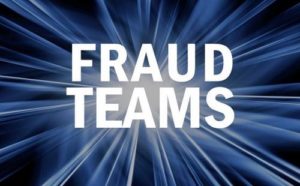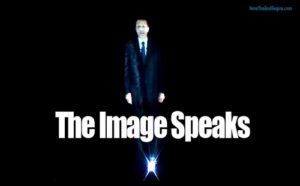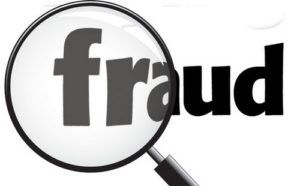Corruption is a state of decay, pollution, or incorrectness. In the Bible, corruption is one of the effects of sin that resulted from the fall of man. In the beginning, God created a perfect paradise, free of sickness, pain, and death. But when Adam and Eve disobeyed God by eating the forbidden fruit, sin entered the world, spoiling its perfection. That sin also brought contamination and decay to Adam and Eve and to the human nature of every person born after that (Romans 5:12). Thus, corruption in the Bible is the state of moral contamination and spiritual decay expressed through disobedience toward God.
Corruption is closely related to spiritual death. God told Adam that, if he ate from the tree of the knowledge of good and evil, he would “surely die” (Genesis 2:17). Adam didn’t die a physical death that day but a spiritual one that involved separation from God (Ephesians 2:1–3).
By the time of Noah, the corruption of mankind had been amplified: “Now the earth was corrupt in God’s sight and was full of violence. God saw how corrupt the earth had become, for all the people on earth had corrupted their ways” (Genesis 6:11–12).
The Bible describes sinful humanity as corrupt: “The fool says in his heart, ‘There is no God.’ They are corrupt, their deeds are vile; there is no one who does good. The LORD looks down from heaven on all mankind to see if there are any who understand, any who seek God. All have turned away, all have become corrupt; there is no one who does good, not even one (Psalm 14:1–3; see also Psalm 53:1–3; Isaiah 1:4).

In the Old Testament, corruption can refer to literal, physical decay (Job 17:14; Psalm 16:10), but, most often, corruption is used figuratively for moral corruption and depravity (Exodus 32:7; Hosea 9:9). The prophets boldly took a stand against moral decay among God’s people: “The sin of the house of Israel and Judah is extremely great; the land is full of murder, and the city is full of corruption” (Ezekiel 9:9, NET).
Since the foreclosure crisis that swept the nation after the 2008 crash, America’s biggest banks have been involved in a never-ending spree of abuse, scams, and crime.
The latest allegation comes from indefatigable housing reporter David Dayen. This time it is about America’s largest bank, JPMorgan Chase, and how it apparently gamed the 2012 mortgage settlement.
But it’s also worth remembering that the settlement itself was a grotesque miscarriage of justice. In a sane world, many top executives and dozens if not hundreds of lower-level employees would have gone to prison for the systematic document fraud. Yet, as Jesse Eisinger details in his excellent book The Chickenshit Club, President Obama’s Department of Justice and his U.S. attorneys were generally too lazy or too scared to prosecute big white-collar crimes. Instead, they preferred “no admit, no deny” deferred prosecution agreements, in which prosecutors didn’t have to press complicated cases, gigantic banks paid a nominal fee and swore to make changes to fix the problem (a promise which was often violated instantaneously), and case closed.
Over the past decade, this kind of settlement was reached over and over and over again without seemingly any change of behavior. Let’s roll a (highly abridged) tape of the five biggest banks, just covering settlements over $100 million since the financial crisis, compiled by the Corporate Research Project:
JPMorgan Chase (assets: $2.55 trillion)

2009: The bank settled with the Securities and Exchange Commission for $75 million in fines and $647 million in disclaimed fees over allegedly bribing officials in Jefferson County, Alabama.
2010: It agreed to a $6 billion settlement with the Federal Deposit Insurance Corporation and $208 million in a class-action settlement over disputes dealing with its purchase of Washington Mutual.
2011: JPMorgan settled another class-action lawsuit for $100 million over allegations that it tricked credit card customers into higher fees and interest rates.
2012: It agreed to a $297 million SEC settlement for allegedly misleading investors.
2013: JPMorgan agreed to a $410 million settlement with the Federal Energy Regulatory Commission over allegedly rigging electricity markets; two of its traders were charged with securities fraud by the SEC over the London Whale case, for which it settled for $920 million divided between the SEC, the British Financial Conduct Authority, the Office of the Comptroller of the Currency, and the Federal Reserve, and with the Commodity Futures Trading Commission for $100 million in a separate settlement; it shared a $300 million class-action lawsuit settlement with another company for allegedly forcing homeowners into expensive insurance; it was fined $20 million plus forced to refund $309 million in fees by the Consumer Financial Protection Bureau over allegedly illegal credit card practices; it paid $4.5 billion to settle yet another class-action lawsuit over allegedly misleading investors; it agreed to a $13 billionsettlement with the Justice Department over allegations of mortgage and securities fraud connected to the financial crisis; it was fined about $108 million over allegedly rigging the LIBOR inter-bank interest rate; and it agreed to a $1.7 billion settlement with the Department of Justice over allegedly enabling Bernie Madoff’s Ponzi scheme.
2014: JPMorgan was nailed by four different regulators for rigging the foreign exchange market: fined $350 million by the OCC, fined $310 million by the CFTC, fined $352 million by the British FCA, and fined $550 million plus a felony guilty plea by the Department of Justice.
2015: It was fined $342 million by the Federal Reserve, as part of the same foreign exchange scam; it was fined $136 million by the CFPB, $30 million by the OCC, and ordered to pay $50 million in refunds over allegedly selling bad credit card debt and document fraud; it agreed to a $267 million settlement with the SEC and to pay $40 million to the CFTC over allegedly misleading investors.
2016: It was again hit by multiple regulators over allegedly bribing Chinese officials: fined $72 million by the Department of Justice, fined $264 millionby the SEC, and $61 million by the Federal Reserve.
Bank of America (assets: $2.25 trillion):
2010: Bank of America agreed to a $108 million settlement with the Federal Trade Commission over alleged fraud associated with the financial crisis; it agreed to a $150 million settlement with the SEC over an alleged failure to disclose losses; and it agreed to a $137 million settlement with the Justice Department for allegedly rigging the municipal bond market.
2011: It paid $315 million to settle a class-action lawsuit over allegedly misleading investors; it agreed to a $335 million settlement with the Justice Department over alleged lending discrimination done by a bank it had bought; it settled with Fannie and Freddie for $2.8 billion over allegedly selling faulty loans.
2012: Bank of America paid $2.43 billion to settle another class-action lawsuit about allegedly misleading investors.
2013: It settled for $165 million with the National Credit Union Administration over alleged bad loans; it agreed to a $131 million SEC settlement over allegedly misleading investors; it paid Fannie $3.6 billionand agreed to buy back $6.75 billion in alleged bad loads, and it settled with Freddie Mac for $404 million over the same thing.
2014: The CFPB ordered the bank to pay $727 million over allegedly illegal credit card practices; it was fined $204 million by the Federal Reserve for allegedly rigging foreign exchange markets; and it agreed to a $16.65 billion Justice Department settlement (the largest single-company settlement in history) over alleged mortgage and securities fraud connected with the financial crisis.
2016: It agreed to a $415 million SEC settlement and to admit wrongdoing for illegally trading with customer deposits.
Wells Fargo (assets: $1.95 trillion):
2009: The bank agreed to buy back $1.4 billion in mortgage securities in a settlement with California over allegedly misleading investors.
2010: It agreed to provide $2 billion more in relief to California.
2011: Wells Fargo agreed to a $148 million settlement with the Justice Department over alleged municipal bond rigging done by a bank it had bought (to which was added a later $37 million settlement on Wells Fargo itself); it paid $125 million to settle a class-action lawsuit over allegedly misleading investors.
2012: The bank agreed to a $175 million settlement with the Justice Department over allegedly racist lending practices.
2013: It agreed to pay Freddie Mac $869 million over allegedly bad loans.
2016: Wells Fargo agreed to a $1.2 billion settlement with the Justice Department over allegedly illegal mortgage lending; and it was fined $100 million by the CFPB for illegally opening two million secret credit card and deposit accounts for its customers, according to its own internal analysis (it later found 1.7 million more accounts).
Citigroup (assets: $1.82 trillion):
2011: The bank agreed to a $285 million settlement with the SEC over alleged securities fraud; it paid $158 million in a civil settlement over allegedly defrauding the government’s mortgage insurance programs.
2012: It paid $590 million to settle a class-action suit over allegedly misleading investors.
2013: Citigroup paid $730 million to settle another class-action lawsuit over allegedly misleading investors; it paid $968 million to Fannie Mae and $395 million to Freddie Mac over alleged bad mortgage loans.
2014: The bank paid $1.13 billion to settle yet another class action lawsuit over allegedly misleading investors; it agreed to a $7 billion settlement with the Department of Justice over allegedly misleading investors about toxic mortgage securities; it was nailed by two different regulators for allegedly rigging foreign exchange markets: $310 million by the Commodities Futures Trading Commission, $358 million by the British Financial Conduct Authority.
2015: Two more regulators hit Citigroup for rigging foreign exchange markets: $925 million plus a guilty plea by the Department of Justice, and $342 million by the Federal Reserve; it was fined $700 million by the CFPB over allegedly illegal credit card practices; and finally it was fined $175 million by the CFTC for allegedly rigging two key inter-bank interest rate benchmarks.
Bank of America has become one of the main symbols of the excesses that brought about the financial meltdown of 2008 and the ensuing economic troubles. BofA was culpable both through its own actions and those of two troubled companies it acquired in 2008: Countrywide Financial and Merrill Lynch. Countrywide initiated many of the predatory mortgages that were then bundled by the likes of Merrill into securities that turned out to be toxic.Those entities ended up costing BoA vast amounts, including a 2014 Justice Department settlement with a price tag of nearly $17 billion.
In the past few years, BofA, which was one of the largest beneficiaries of the federal bailout in 2008 onward, has had to pay billions of dollars to settle lawsuits alleging misbehavior relating to mortgages and mortgage-backed securities. It also got a private bailout in the form of a $5 billion capital infusion from Warren Buffett in 2011.
The name Bank of America dates back to the community banks that A.P. Giannini founded in San Francisco in the early 20th Century, but the company currently bearing that name is technically the descendent of Nationsbank, an aggressive bank holding company based in North Carolina.
The old Bank of America was a pioneer in the development of branch banking both within California and in other states through a holding company called Transamerica, which in 1957 was split off on orders of the Federal Reserve. This thwarted the dreams of Giannini and his sons of opening branches coast-to-coast. Bank of America, nonetheless, remained a powerhouse in California and a cornerstone of the West Coast business establishment. This is why protesters, in one of the iconic episodes of the movement against the war in Vietnam, chose to burn down its branch near the University of California at Santa Barbara in 1970.
In 1985 Bank of America ended a ten-year battle with the California state controller by agreeing to pay $25.4 million to customers whose dormant accounts were not paid interest and were eventually wiped out by illegal service charges. A decade later, California’s attorney general sued Bank of America, accusing it of corruption in its role as bond trustee for the state by misappropriating funds, overcharging for services and destroying evidence of its misdeeds. Dozens of local governments joined the suit, which created potential liability for the bank of some $3 billion. As SF Weekly put it in a 5,000-word story in 1997, the lawsuits alleged “a truly astonishing pattern of utterly brazen thievery.” In 1998 Bank of America agreed to pay $187 million to settle the case.
Merging with NationsBank
After a particularly rough period stemming from exposure to third world debt and other risky loans, Bank of America resumed an aggressive growth posture, taking over its California rival Security Pacific in 1992 and failed thrifts in various western states. Despite these moves, Bank of America felt it could not survive unless it joined forces with an even larger financial institution. As a merger partner it chose NationsBank, whose roots went back to the founding of Commercial National Bank in Charlotte, North Carolina in 1874. Various mergers over the following decades led to the formation in 1960 of North Carolina National Bank, which in 1968 established the holding company NCNB Corp.
After Hugh McColl, Jr., a brash ex-Marine who was called “the George Patton of banking,” took over as CEO in 1983, NCNB went on an acquisitions binge as it sought to break down the barriers to full interstate banking. Among its biggest purchases were First RepublicBank in Texas, which had been taken over by federal regulators, and C&S/Sovran. The latter deal, approved by the Federal Reserve in 1991, turned NCNB into one of the country’s most powerful financial institutions, which McColl marked by changing the company’s name to NationsBank. The newly named banking giant went on to make acquisitions such as St. Louis-based Boatmen’s Bancshares and Barnett Banks in Florida.
It also joined the effort to break down the barriers between commercial banking and investment banking by purchasing Montgomery Securities. NationsBank ran into legal problems after it adopted high-pressure tactics in its securities businesses. In 1997 it agreed to pay $29 million to settle a class action suit alleging that its brokerage joint venture with Dean Witter had engaged in deceptive sales practices.
The combination of NationsBank and Bank of America took effect in 1998. Although NationsBank was technically the surviving entity and McColl became its chief executive, the name chosen for the new company was Bank of America, with headquarters in Charlotte.
The new Bank of America continued to grapple with legal problems it inherited from the old one and from its predecessors. In 2000 BofA agreed to pay $35 million to settle a class action suit alleging that it had charged excessive fees to trust account beneficiaries. In 2002 BofA paid $490 million to settle a suit by shareholders alleging that they had not been notified of significant trading losses in the period leading up to the NationsBank takeover. In 2004, just before BofA shareholders were to vote on the $48 billion acquisition of FleetBoston, the two banks agreed to a $675 million settlement of charges of improper mutual fund trading practices; they also agreed to exit the mutual fund business. BofA also paid to settle lawsuits concerning its dealings with corporate criminals Enron ($69 million) and WorldCom ($460 million).
The Ill-Fated Countrywide Financial and Merrill Lynch Deals
In July 2008 BofA completed the acquisition of the giant mortgage lender Countrywide Financial, which was becoming notorious for pushing borrowers, especially minority customers, into predatory loans and was growing weaker from the large number of those loans that were going into default.
Amid the financial meltdown in September 2008, BofA was pressured to take over the venerable but teetering investment house of Merrill Lynch, to prevent it from following Lehman Brothers into collapse.
Merrill Lynch came with a checkered history. In 1998 it had to pay $400 million to settle charges that it helped push Orange County, California into bankruptcy four years earlier with reckless investment advice. In 2002 it agreed to pay $100 million to settle charges that its analysts skewed their advice to promote the firm’s investment banking business (plus another $100 million the following year). In 2003 it paid $80 million to settle allegations relating to dealings with Enron. In 2005 industry regulator NASD (now FINRA) fined Merrill $14 million for improper sales of mutual fund shares. In an early indicator of the problem of toxic assets, Merrill announced an $8 billion write-down in 2007. Its mortgage-related losses would climb to more than $45 billion.
BofA participated in the federal government’s Troubled Assets Relief Program (TARP), initially receiving $25 billion and then another $20 billion in assistance to help it absorb Merrill, which reported a loss of more than $15 billion in the fourth quarter of 2008. It later came out that while Merrill was racking up losses it paid out $10 million or more to 11 top executives. It was also belatedly revealed that Federal Reserve chairman Ben Bernanke and then-Treasury Secretary Henry Paulson had pressured BofA to conceal the extent of the financial mess at Merrill until after shareholders approved the acquisition. In the wake of that revelation, BofA shareholders stripped chief executive Kenneth Lewis of his additional post as chairman. Lewis later resigned from the CEO position as well.
In August 2009 BofA agreed to pay $33 million to settle SEC charges that it misled investors about more than $5 billion in bonuses that were being paid to Merrill employees at the time of the firm’s acquisition. In February 2010 the SEC announced a new $150 million settlement with BofA concerning the bank’s failure to disclose Merrill’s “extraordinary losses.” At the same time, New York Attorney General Andrew Cuomo filed civil fraud charges against Lewis personally, as well as BofA’s former chief financial officer Joseph Price for “duping shareholders and the federal government.”
In May 2011 FINRA fined Merrill $3 million for misrepresenting loan delinquency data when selling residential subprime mortgage securities, and in October 2011 fined it $1 million for failing to properly supervise one of its registered representatives who was operating a Ponzi scheme. More FINRA fines came in 2012: $1 million for failing to arbitrate disputes with employees; $2.8 million(plus $32 million in remediation) for unwarranted fees; and $500,000 for failing to file hundreds of required reports. In December 2011 BofA agreed to pay $315 million to settle a class-action suit alleging that Merrill had deceived investors when selling mortgage-backed securities. June 2012 court filings in a shareholder lawsuit against BofA provided more documentation that bank executives knew in 2008 that the Merrill acquisition would depress BofA earnings for years to come but failed to provide that information to shareholders. In September 2012 BofA announced that it would pay $2.43 billion to settle the litigation.
The Countrywide acquisition also came back to haunt BofA. In June 2010 it agreed to pay $108 million to settle federal charges that Countrywide’s loan-servicing operations had deceived homeowners who were behind on their payments into paying wildly inflated fees. Four months later, Countrywide founder Angelo Mozilo reached a $67.5 million settlement of civil fraud charges brought by the SEC. As part of an indemnification agreement Mozilo had with Countrywide, BofA paid $20 million of the settlement amount, which consisted of a $22.5 million penalty (a record amount for a case against a public company executive) and $45 million in “disgorgement of ill-gotten gains.” A criminal case against Mozilo was shelved.
In May 2011 BofA reached a $20 million settlement of Justice Department charges that Countrywide had wrongfully foreclosed on active duty members of the armed forces without first obtaining required court orders. And in December 2011 BofA agreed to pay $335 million to settle charges that Countrywide had discriminated against minority customers by charging them higher fees and interest rates during the housing boom. In mid-2012 the Wall Street Journal reported that “people close to the bank” estimated that Countrywide had cost BofA more than $40 billion in real estate losses, legal expenses and settlements with state and federal agencies.
BofA faced its own charges as well. In December 2010 it agreed to pay a total of $137.3 million in restitution to federal and state agencies for the participation of its securities unit in an alleged conspiracy to rig bids in the municipal bond derivatives market. In January 2011 BofA agreed to pay $2.8 billion to Fannie Mae and Freddie Mac to settle charges that it sold faulty loans to the housing finance agencies. In September 2011 the Federal Housing Finance Agency sued BofA and other firms for abuses in the sale of mortgage-backed securities to Fannie Mae and Freddie Mac.
BofA was one of five large mortgage servicers that in February 2012 consented to a $25 billion settlement with the federal government and state attorneys general to resolve allegations of loan servicing and foreclosure abuses. An independent monitor set up to oversee the settlement reported in August 2012 that BofA had not yet completed any modifications of first-lien mortgages or any refinancings. The New York Attorney General later sued BofA for breaching the terms of the foreclosure settlement.
In September 2012 BofA settled federal allegations that it discriminated against recipients of disability income. In January 2013 BofA was one of ten major lenders that agreed to pay a total of $8.5 billion to resolve claims of foreclosure abuses. At the same time, BofA by itself agreed to pay $10.3 billion ($3.6 billion in cash and $6.75 billion in mortgage repurchases) to Fannie Mae to settle a new lawsuit concerning the bank’s sale of faulty mortgages to the agency. BofA also agreed to sell off about 20 percent of its loan servicing business.
In April 2013 the National Credit Union Administration announced that BofA had agreed to pay $165 million to settle claims relating to losses from the purchases of residential mortgage-backed securities.
In May 2013 BoA agreed to pay $1.7 billion to MBIA to settle a long-running lawsuit in which the bond insurer had sued Countrywide for misleading it about the quality of mortgages packaged into securities that MBIA agreed to insure.
In August 2013 the Justice Department filed a civil suit charging BofA and its Merrill Lynch unit of defrauding investors by making misleading statements about the safety of $850 million in mortgage-backed securities sold in 2008.
In October 2013 a federal jury found BofA’s Countrywide unit liable for the sale of defective mortgages to Fannie Mae and Freddie Mac. A former Countrywide midlevel manager, Rebecca Mairone, was found individually liable in the civil fraud case.
In December 2013 Freddie Mac announced that BofA had agreed to pay $404 million to settle claims by the mortgage agency that the bank had sold it hundreds of thousands of defective home loans.
That same month, the SEC announced that BofA would pay $131.8 million to settle allegations that Merrill Lynch had misled investors about collateralized debt obligations.
In March 2014 the Federal Housing Finance Agency announced that BofA would pay $9.3 billion to settle the case involving the sale of deficient mortgage-backed securities to Fannie Mae and Freddie Mac. The total included $3.2 billion in securities repurchases.
In April 2014 the U.S. Consumer Financial Protection Bureau ordered BofA to pay $727 million to compensate consumers harmed by deceptive marketing of credit card add-on products.
That same month, BofA disclosed that it had mistakenly overstated its capital by $4 billion.
In July 2014 a federal judge ordered BofA to pay $1.27 billion in damages after being found guilty by a jury in a case involving defective mortgages sold by Countrywide. (In May 2016 a federal appeals court overturned that penalty.)
That case paled in comparison to the $16.65 billion settlement BofA reached with the Justice Department the following month to resolve federal and state claims relating to the practices of Merrill Lynch and Countrywide in the runup to the financial meltdown. The amount was made up of about $10 billion in cash payments and $7 billion in so-called mortgaged relief to consumers.
In December 2014 FINRA fined Merrill Lynch $4 million as part of a case against ten investment banks for allowing their stock analysts to solicit business and offer favorable research coverage in connection with a planned initial public offering of Toys R Us in 2010.
In May 2015 the Federal Reserve fined BofA $205 million for “unsafe and unsound” practices relating to foreign exchange markets.
In June 2016 the SEC announced that Merrill Lynch would pay $415 million to settle allegations that it misused client cash to engage in trading for the company’s benefit.
In September 2016 the SEC announced that Merrill would pay a $12.5 million penalty for maintaining ineffective trading controls that failed to prevent erroneous orders from being sent to the markets and causing mini-flash crashes.
Employment Issues
Bank of America has been repeatedly accused of violating federal overtime pay laws and has paid out millions to settle various cases. These include settlements of $22 million in 2001, $4 million in 2003 and $9 million in 2005. A suit seeking national class action status was filed in 2010.
In August 2013 it was reported that BofA and Merrill would pay $160 million to settle a racial discrimination case involving 700 brokers, and the following month they agreed to pay $39 million to settle a gender discrimination suit. Around the same time, the U.S. Labor Department announcedthat BofA was being ordered to pay more than $2 million in compensation to African-American job applicants who were determined to have been subjected to race-based hiring discrimination.
Bankers and gangsters are mainstream in today’s financial institutions, these large to midsize banks and there under links the “bankers” are the corrupt wheeler-dealers, they manipulated markets, sliced and diced mortgages (fraudulent foreclosures) and played loose with other people’s money, they are gangsters.. Their history proves the bad fruit that has harmed the American people…. Source
StevieRay Hansen
Editor, Bankster Crime
MY MISSION IS NOT TO CONVINCE YOU, ONLY TO INFORM…
![]()




